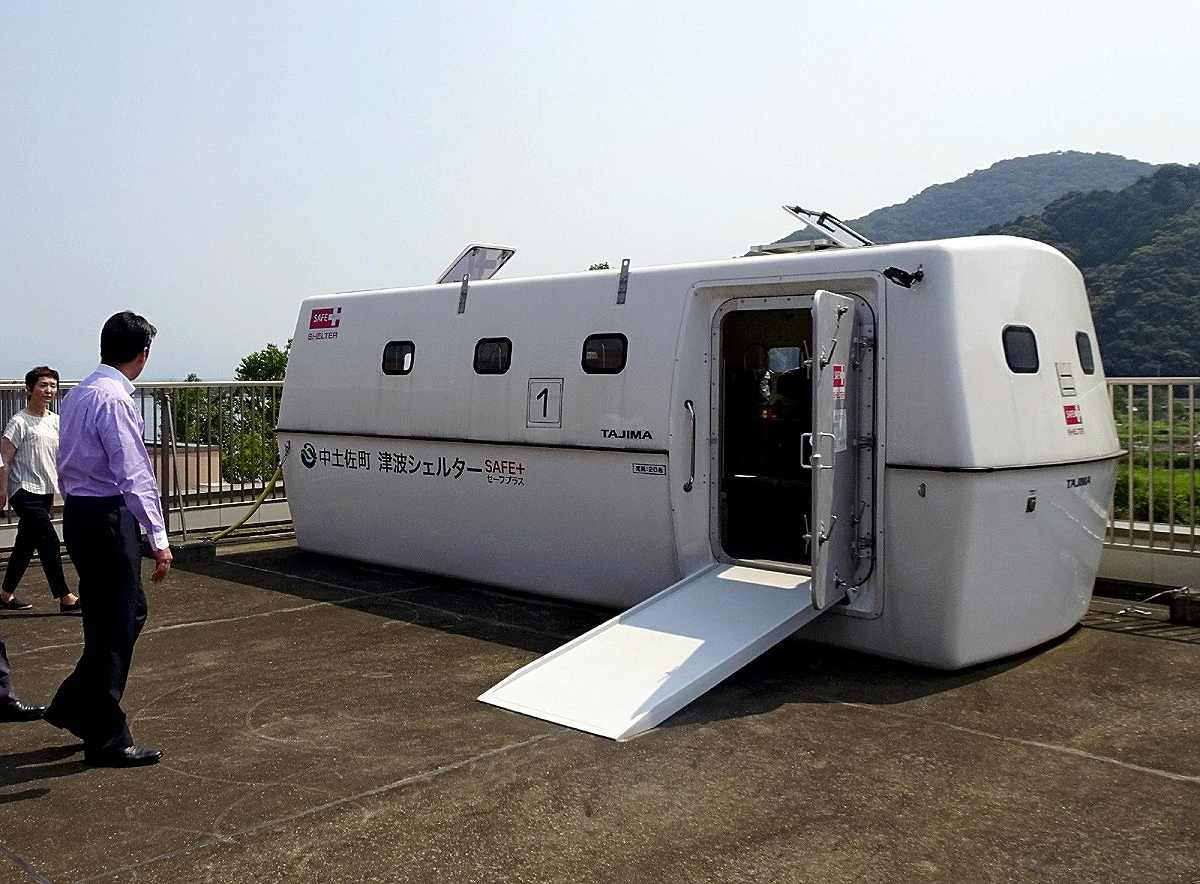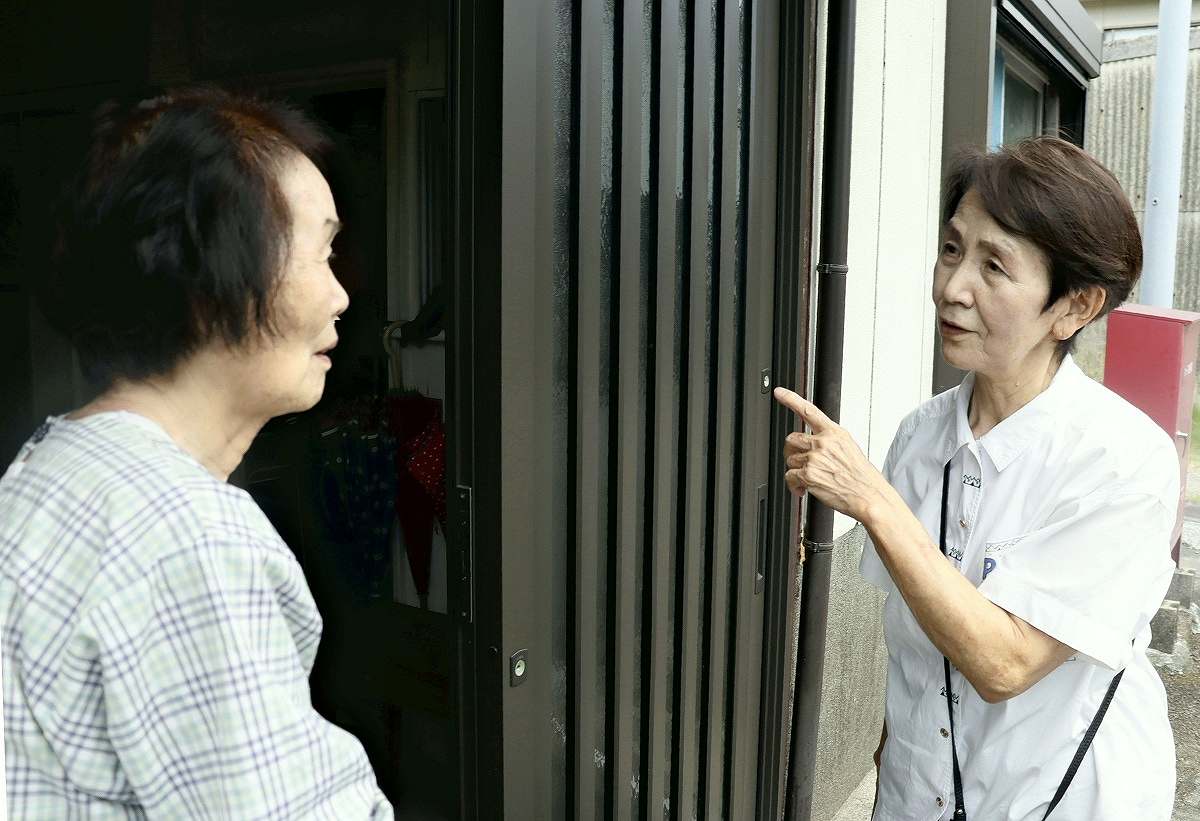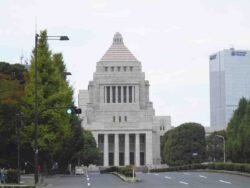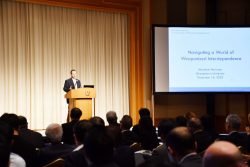Authorities Tackle Evacuation of Elderly Before Tsunami; Limited Time, Lack of Personnel Among Key Challenges

A “tsunami lifeboat” stands at a special nursing home for the elderly in the town of Nakatosa, Kochi Prefecture, in July 2018.
17:48 JST, August 11, 2024
Areas for which the Japan Meteorological Agency issued a Megathrust Earthquake Attention advisory are now facing the serious issue of how to swiftly evacuate the elderly, handicapped and other people who need assistance before a tsunami arrives.
Those who provide support for such persons often find it difficult to secure enough personnel, so local governments and residents will need to cooperate to prevent delays in evacuations.
‘Tsunami lifeboats’ made available
“What will happen if a Nankai Trough earthquake strikes? The sense of urgency has risen dramatically,” said Kohei Kiyooka, 39, a staff member in charge of disaster prevention at a special nursing home for the elderly located by the sea in the town of Nakatosa, Kochi Prefecture. Kiyooka was recalling the tense situation on Thursday night after the Megathrust Earthquake Attention advisory was issued.
A tsunami as high as 10 to 15 meters is expected to hit the area in the event of a Nankai Trough earthquake, but there is no high ground near the nursing home. Many of the 68 residents have to use wheelchairs, and some are bedridden. On Friday morning, Kiyooka called a nearby facility for the elderly and asked if they could accommodate his facility’s residents if they needed to be evacuated. However, he was told that it would be difficult to accept all of them.
In preparation for an emergency, Kiyooka’s facility has borrowed from the town seven “tsunami lifeboats” capable of carrying 20 people each. The boats can accommodate all the facility’s residents and staff, and they can wait for rescue while drifting in the boats.
However, if they have to wait too long, the elderly residents’ health may be at risk. “We want to talk to the prefectural and central governments as soon as possible about how to secure places to accept the residents,” Kiyooka said.
Once a Nankai Trough quake strikes, a tsunami will reach some areas in just a few minutes. For facilities with elderly people located in areas that are expected to be inundated, it will be important to evacuate residents as quickly as possible.
“Evacuation of the elderly and hospitalized patients requires manpower. Staff members can’t do it in time by themselves,” said Prof. Yasuhiro Yuuki of Shukutoku University, judging from cases in the 2011 Great East Japan Earthquake. “It’s important to keep in touch with local residents and other facilities in the neighborhood on a regular basis and determine how to cooperate and divide roles in the event of an emergency.”
Protect one’s own life

Mayumi Akanegakubo, the chairperson of a local community association in Miyazaki City, asks an elderly resident on Friday to confirm their evacuation route in the event of an emergency.
Another major issue will be the evacuation of elderly and disabled people who live at home.
Local governments are obliged to make efforts to draw up “individual evacuation plans,” which determine in advance how to evacuate people who need assistance. According to the Internal Affairs and Communications Ministry, about 85% of local governments had begun formulating such plans as of October 2023, but only about 9% have completed them.
This is mainly because local governments are short-handed and have been unable to secure people who would help with evacuation efforts.
At the time of an earthquake, those who provide assistance will need to respond quickly. After the earthquake hit the Hyuganada seas on Thursday evening, council members of a local community association in the Shimayama district of Miyazaki City went to elderly residents’ homes and asked them to ensure their evacuation routes.
“It’s important for people to be aware that they should take action to protect their own lives,” said Mayumi Akanegakubo, 77, the chairperson of the association.
How to make quake advisory effective
In addition to Megathrust Earthquake Attention, there is also an advisory called “Megathrust Earthquake Alert,” which calls on people to take steps in advance if it might not possible for them to evacuate before a tsunami arrives. However, the question is how to make this advisory effective.
The village of Niijima, Tokyo, where a 27-meter-high tsunami is expected to hit in the event of a Nankai Trough quake, has 171 residents who need assistance, including elderly people. On Friday morning, local government officials visited 77 of these residents who live in areas that are expected to be inundated and informed them that they could move to an evacuation center. However, no one wanted to do so.
“It will be difficult to evacuate once a tsunami has occurred. To increase the number of people who evacuate in advance, we need to consider how to provide information about earthquakes,” said the chief of the village’s civil affairs division.
Related Tags
"Society" POPULAR ARTICLE
-

M4.9 Earthquake Hits Tokyo, Neighboring Prefectures
-

M7.5 Earthquake Hits Northern Japan; Tsunami Waves Observed in Hokkaido, Aomori and Iwate Prefectures
-

Tsukiji Market Urges Tourists to Avoid Visiting in Year-End
-

Beloved Cat Stationmaster Nitama in Wakayama Pref. Passes Away at 15
-

M5.7 Earthquake Hits Japan’s Kumamoto Pref., Measuring Upper 5 Intensity, No Tsunami Expected
JN ACCESS RANKING
-

Japan’s Hopes for Seafood Exports Shot Down in China Spat
-

Keidanren Chairman Yoshinobu Tsutsui Visits Kashiwazaki-Kariwa Nuclear Power Plant; Inspects New Emergency Safety System
-

Japan to Charge Foreigners More for Residence Permits, Looking to Align with Western Countries
-

Japan Exports Rise in October as Slump in U.S. Sales Eases
-

Govt Aims to Expand NISA Program Lineup, Abolish Age Restriction
























